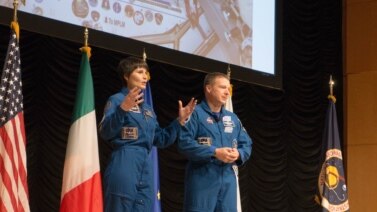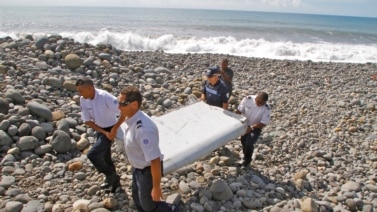Earth is in the middle of its sixth mass extinction. The last such event took place 66 million years ago, when an asteroid – a huge space rock - hit our planet. The asteroid strike killed off dinosaurs and almost everything else.
Now, scientists are in a race against time to classify - organize into groups - the estimated 11 million species alive today. Yet only about two million species are known to science. Researchers are worried many will disappear before they even have a name.
The United States Botanic Garden has launched a field project with a really big goal. Vicki Funk, a botanist with the Smithsonian Institution, explains.
"We are trying to get about half of the diversity of plant life on Earth at the genus level in two years."
The effort is part of what Smithsonian officials are calling the Global Genome Initiative. Its goal is to classify 50 percent of all plant species. Vicki Funk admits it seems like a huge project, but says the Botanic Garden is a great place to start.
"Because if you look around you, you see all kinds of plants from all over the world growing right next to one another. So instead of going to Madagascar to get a plant and Hawaii to get a plant, you can get them in rooms that are adjacent to one another."
Many of the species are already growing in botanic gardens – places known for their collections of rare or endangered plants. The aim is to set up a program to classify plants at 36 partner organizations in 17 countries.
One recent day in Washington, Vicki Funk performed a test-run on a long-stemmed pink flower called Sabatia. She took pictures of the plant. She then put one piece into silica gel, and dropped another piece into liquid nitrogen, where it is frozen. Next, she removed the flower and pressed it in a plant book for a museum collection.
"The plants are placed between these corrugates (corrugated cardboard) that have holes in them and when we get the press back we put it into a dryer that blows hot air through it and overnight it will turn it into a beautiful specimen. Usually it saves the color. It looks very nice."
All the plants are numbered and linked in a computer database with the frozen pieces. These specimens are sent to the Smithsonian Institute's Genomics Laboratory for studies of their genetic material. Jonathan Coddington directs the Genome Initiative at the Smithsonian’s Museum of Natural History. He says the project is on target to gather samples from all 10,000 plant and animal families, and half the genera in those families, within five years.
"Just into our biorepository in the pipeline I have over 2,000 families and close to 12,000 genera."
Jonathan Coddington says that biorepository is the largest such facility in the world. It collects, classifies and stores samples.
"What we want to do is organize it and get a lot of information evenly spaced out across all of life from bacteria to humans."
College student Kristen Van Neste is helping with the project.
"What we are doing is important because it is not just for our use, its for future use."
Scientists will use the information to identify species, solve environmental problems, study climate change and look for new cures for diseases.
I’m Marsha James.
VOA’s Rosanne Skirble reported this story from Washington. Marsha James adapted it for Learning English. George Grow was the editor.
Words in This Story
classify – v. to organize or arrange (people or things) into groups based on ways that they are alike
species – n. a group of animals or plants that are similar
adjacent – adj. close or near
specimen – n. something collected (such as an animal or plant) collected as an example of a particular kind of thing
biorepository - n. a place that collects, catalogs and stores samples of materials





